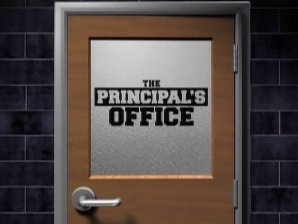DPS-OpenWiFi to be updated
A group of students use DPS-OpenWiFi on their personal devices during their study hall.
February 8, 2018
From streaming, posting, Googling and gaming, to getting last-minute homework help and printing, internet access is a fundamental aspect of 2018 — and when it’s taken away it may just feel like the world is coming to a startling end.
Throughout the archaic week-without-wifi — Jan 15-18 — just that was happening. No one knew what to do with themselves — lunches and study halls were wasted eating and talking to friends, students were forced to pay attention in class and take handwritten notes — it was madness. But, never fear, the DHS administration is here.
Joseph Martino, business and finance director for Danbury Public Schools who handles the internet service, says that the district is looking to replace the entire firewall within the coming weeks.
“The entire grid was replaced six years ago,” Martino said. The grid then gets updated, replaced, and added to every 2-3 years, Martino said. This puts the update to occur sometime over the summer; however, he said that due to the recent shut down of the DPS-OpenWiFi, the district is looking to speed up the process.
The entire issue arrived with the beginning of LAS testing, the equivalent to a PSAT for the ELL students who are unable to take the usual PSAT test.
Principal Dan Donovan said the test is state-mandated and around 300 students have to take it. The test also requires the downloading of videos as well as the uploading of the students’ recorded voice responses.
“What makes it harder is there’s an upload,” Martino said. “The best way to describe it is that upload pushes against traffic, and that sucks up even more bandwidth.”
In layman’s terms bandwidth is the amount of data that can be processed and sent over an internet connection at a time.
All of the DPS internet servers lie on the same bandwidth. Martino and Donovan described it like a pipe, saying that there’s only so much space for the data to go through.
“The Open Wifi was taking up half of the bandwidth space,” Donovan said. “The No. 1 user was epic gaming sites which brought up problems with testing.”
Donovan continued to say that the abundant usage of internet at DHS would cause the test to kick students out, forcing them to re-sign in and wait for it to start working again so they could continue the test.
“It’s just unfair for the kids who have to take the test,” Donovan said. “We have to give our kids the best chance to do their best.” He said that shutting off the DPS-OpenWiFi until the issue could be solved was the only option.
Since the week of Jan. 15, when the wifi was shut off, technicians have blocked gaming sites to prevent future shutdowns until the testing is complete this month and the internet grid could be replaced.
Despite the apparent necessity of the closure of the OpenWiFi, it has caused many problems for the staff and student body who often rely on the school internet for school work.
“I use the internet for about 65 percent of the day,” says sophomore Brianna Luis. Luis is in the DECO program and she says that the majority of her school work is online.
“I watch Youtube videos for DECO, there’s many DECO websites that I had to access, there’s apps like Google Docs and spreadsheets that I had to use that weren’t working when they shut off the wifi,” Luis says.
Senior Joey Miguel also says he uses his laptop pretty much in every class. “I take notes on my laptop everyday.”
With the push to go green and reduce paper usage by putting assignments and other class-related activities online, teachers were suffering as well — even those on the Danbury-Wireless, the server for district provided electronics.
“It’s just not dependable,” says family-consumer science teacher Kimberly D’Auria. She says that the wifi has caused her problems since her first day at DHS and during the LAS testing it was especially hard for her and her students.
She says that it has made her teaching go extremely slow, and forced her students to finish their projects at home, as they were unable to use class time to research due to the shutdown.
She also tried playing a PBS video for one of her classes and ended up having to assign it for homework since the class time was instead spent in silence, waiting for the turning circle that signifies a buffering video to disappear.
D’Auria is grateful that the tech department at DHS has been so proactive in terms of helping her — they frequently appear in her room sans request to test the strength of her broadband connection and gave her a Thinkpad for meetings when her laptop won’t work. But, she says that “since we’re in a digital age we have to have a system” to prevent issues such as hers — all the time and during testing such as LAS.
Both Martino and Donovan understand the struggle kids and teachers had and are having.
“They just have to use data if it doesn’t work,” says Donovan about the internet connection. “Unfortunately during this time” of LAS testing, the shutdown “has to be done.”
Martino said DHS has more than 3000 devices attached to the OpenWiFi as many students, faculty, and staff members have both a phone and a laptop or tablet connected.
“It’s like we’re running a small city,” he said. Which is why the tech department is always looking to keep the district as updated as possible.
D’Auria says, “ I see a difference every time they update — my own internet access is slowly getting stronger with every fix that they give me.”
There have been some temporary fixes to the problems, though. Donovan said they blocked the epic gaming sites that were taking up so much of the bandwidth.
To make the internet load faster, Donovan also recommends shutting off the wifi on personal devices upon leaving a building, and turning it back on once another building is reached — turning it off after leaving D building and turning it back on in C building, for example — as each building has a different router the device needs to connect to.
Despite the horridity of the week when everyone was transported back to the Dark Ages with no internet access, there is hope for a wifi-filled future.
But, on the bright side, the wifi-less week did seem to cause a miracle to happen:
“I actually had to do my homework at home,” Miguel said.





















